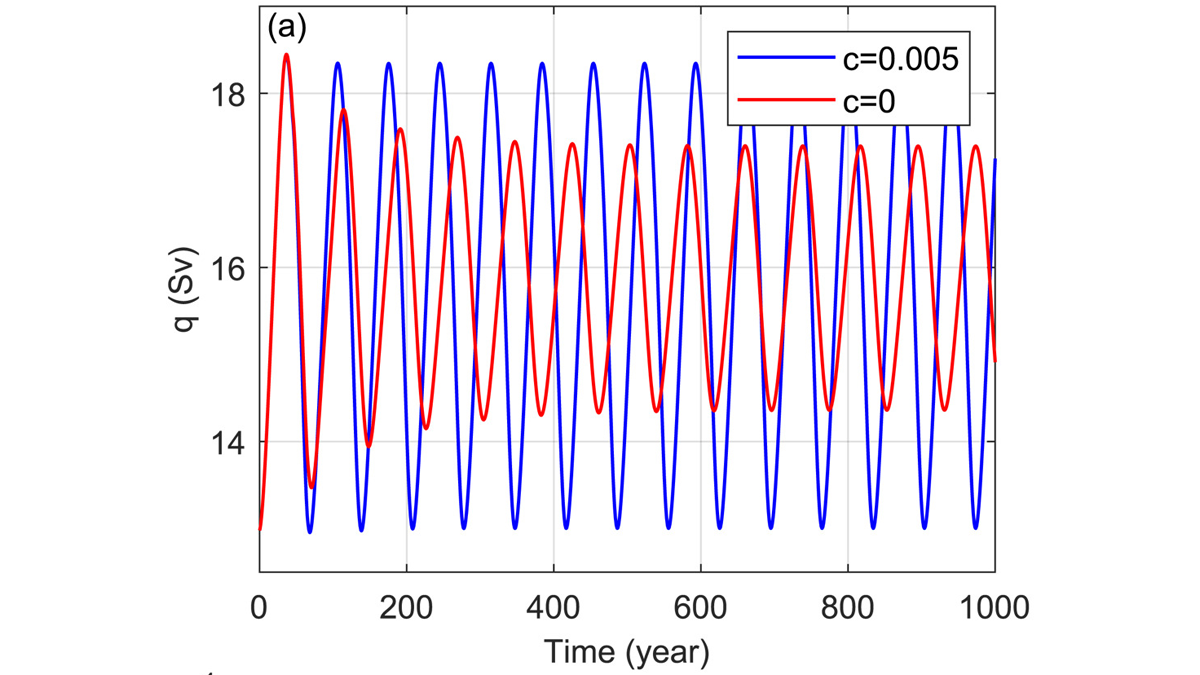Editors’ Highlights are summaries of recent papers by AGU’s journal editors.
Source: Geophysical Research Letters
The Atlantic Meridional Overturning Circulation (AMOC) is a globally important feature of the ocean circulation, and the salinity of water in the North Atlantic is a key determinant of its strength. Simple models check our understanding of real-world phenomena—have we at least identified the most essential physics of a system? One such model, developed by physical oceanographer Henry Stommel in 1961, reduces the Atlantic Meridional Overturning Circulation (AMOC) to two oceanic compartments, each with their own seawater properties like temperature and salinity. Despite the utility of this simple model for considering the strength of the AMOC at one particular time, it does not account for the slow, oscillatory behavior of the AMOC as inferred from observations and paleoclimate proxies.
Seeking to remedy this shortfall of the Stommel model, Wei and Zhang [2022] adapted another simple model—more often a topic of conversation to those studying tropical climate variability such as El Niño—known as the delayed oscillator. This enabled a direct coupling between the AMOC and the flow of freshwater from the Arctic Ocean into the North Atlantic—essentially pumping the breaks on the AMOC. When these two simple models are allowed to exchange information during a simulation, the negative feedback between freshwater flux from the Arctic and AMOC strength causes the AMOC to oscillate with a multidecadal periodicity. This insight may help sharpen our focus on which parts of the most sophisticated climate models require improvement, so that we may better predict future AMOC behavior and related climatic consequences.
Citation: Wei, X., & Zhang, R. (2022). A Simple Conceptual Model for the Self-sustained Multidecadal AMOC Variability. Geophysical Research Letters, 49, e2022GL099800. https://doi.org/10.1029/2022GL099800
—Kristopher B. Karnauskas, Editor, Geophysical Research Letters

